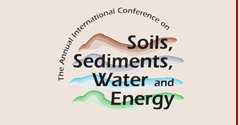Abstract
Passive biological treatment of acid mine drainage (AMD) relies on sulfate-reducing bacteria (SRB) supported by a biodegradable organic carbon source. However, long-term treatment performance can be limited by the degradation rates of organic carbon available to SRB, and by low metal stability in spent reactive mixtures. The first part of this study focused on characterization of six natural organic materials and their short-term effectiveness in sulfate-reduction and metal removal from synthetic AMD. In the second part, long-term performance and metal precipitates in the reactive mixtures were assessed. Maple wood chips, sphagnum peat moss, leaf compost, conifer compost, poultry manure and conifer sawdust were analyzed in terms of their carbon and nitrogen content, as well as their easily available substances content (EAS). Single substrates and substrate mixtures were tested in a 70-day batch experiment (2-L reactors) and in an extended batch study for up to 350 days. Geochemical modeling and scanning electron microscopy (SEM) was used to assess the minerals present in the solid phase. The highest EAS content and the lowest C/N ratio suggested poultry manure would be the best substrate. Nevertheless, the lowest efficiency was found in the poultry manure reactor, whereas the mixture of three organic materials was the most effective. After 350 days, the mixture of organic carbon sources was still efficient for AMD treatment. SEM analysis of the solid phase indicated the presence of iron sulfides. Substrate characterization provided insight on organic carbon availability but did not elucidate their ability to promote sulfate-reduction and metal removal. Further research is needed to accurately predict long-term carbon availability and to assess the metal precipitates in spent reactive mixtures.
Recommended Citation
Neculita, Carmen M.; Zagury, Gérald J.; and Kulnieks, Viktors
(2010)
"Short-Term And Long-Term Bioreactors For Acid Mine Drainage Treatment,"
Proceedings of the Annual International Conference on Soils, Sediments, Water and Energy: Vol. 12, Article 2.
Available at:
https://scholarworks.umass.edu/soilsproceedings/vol12/iss1/2
